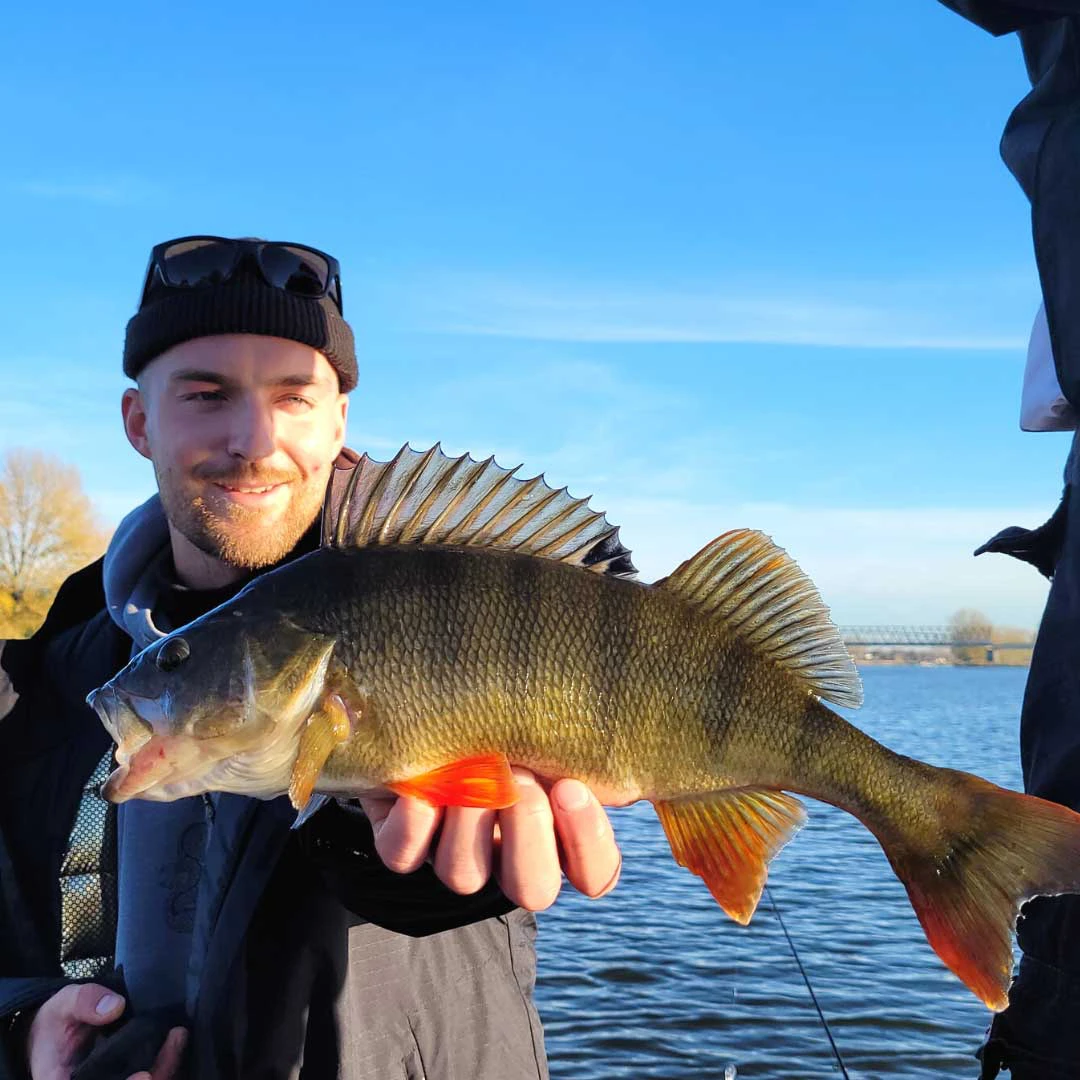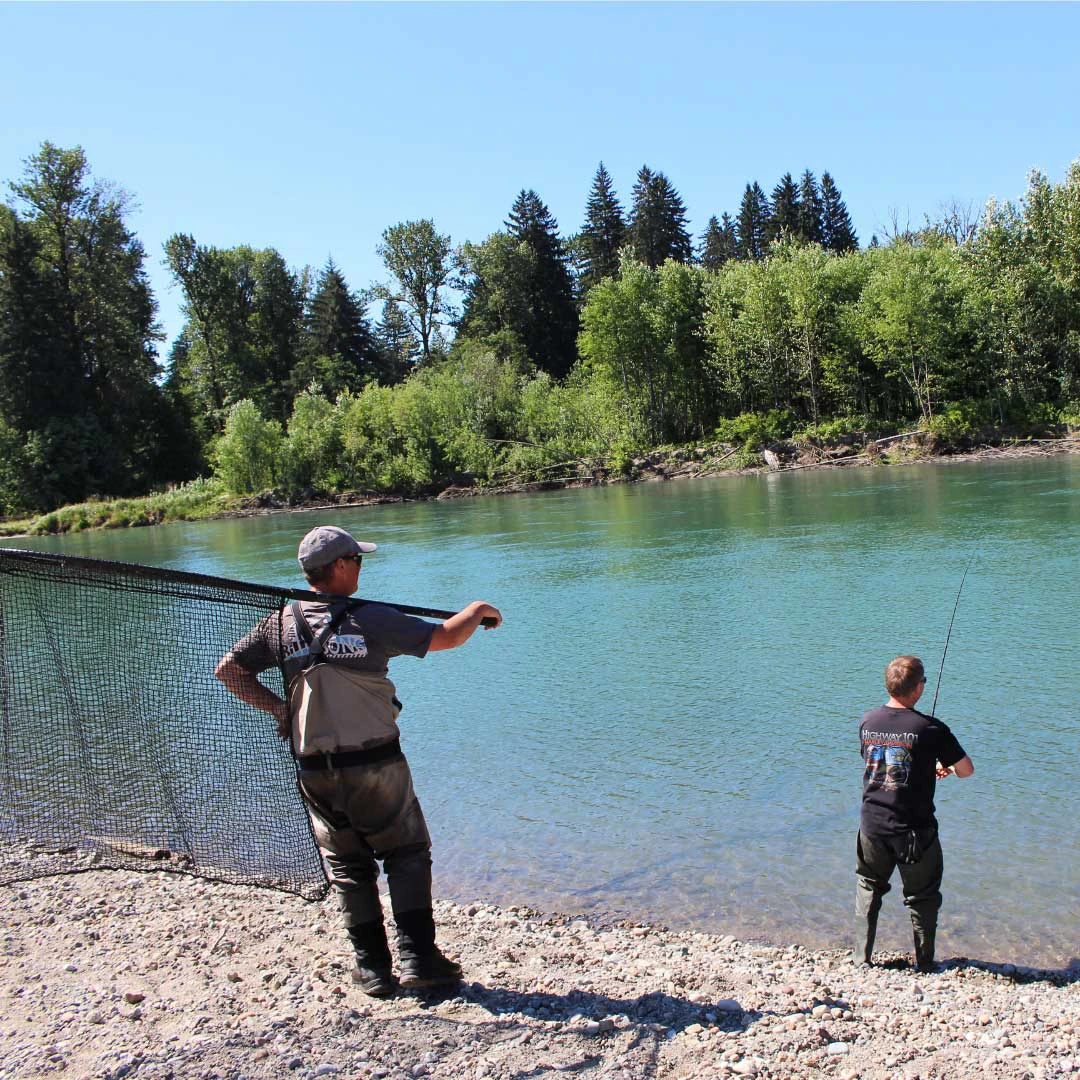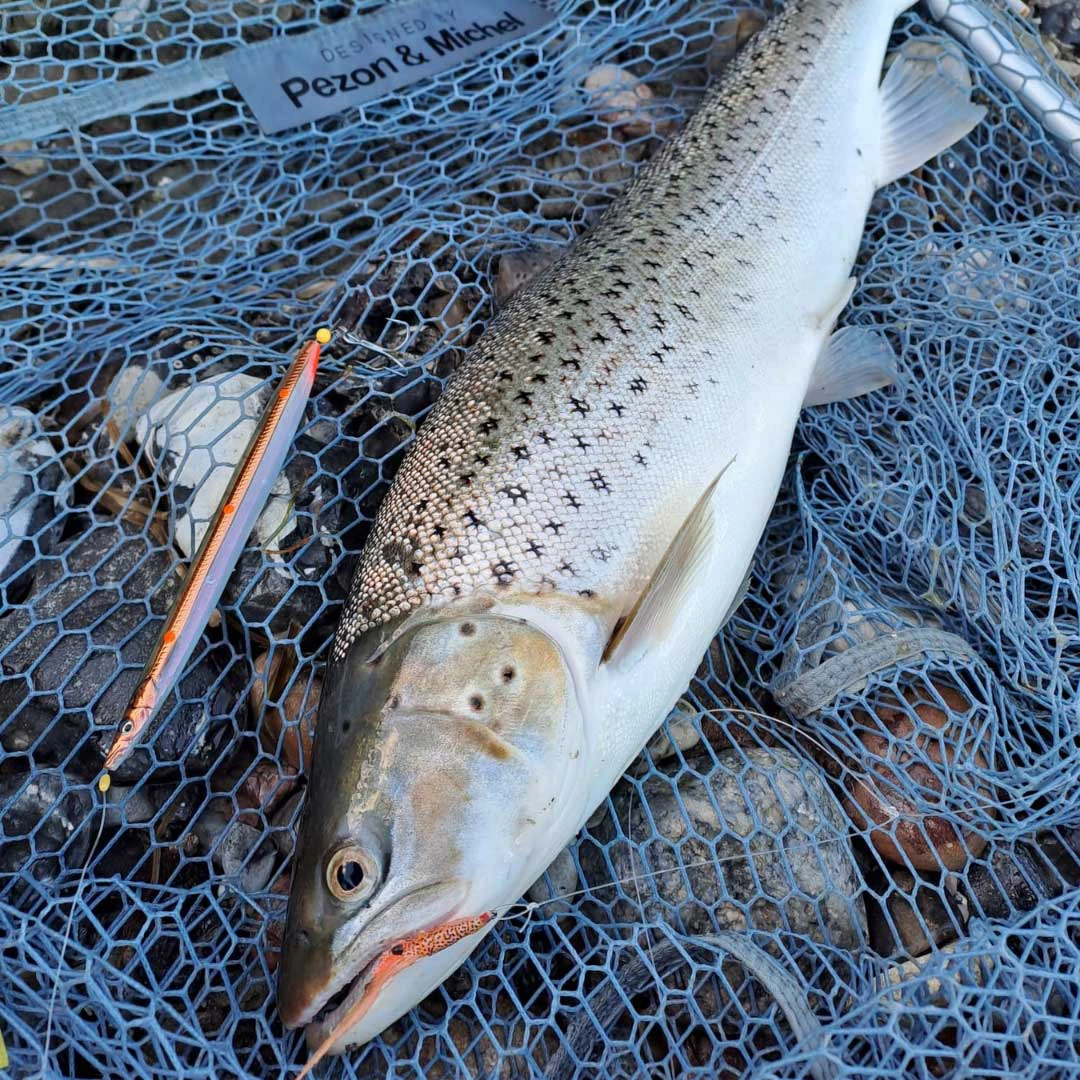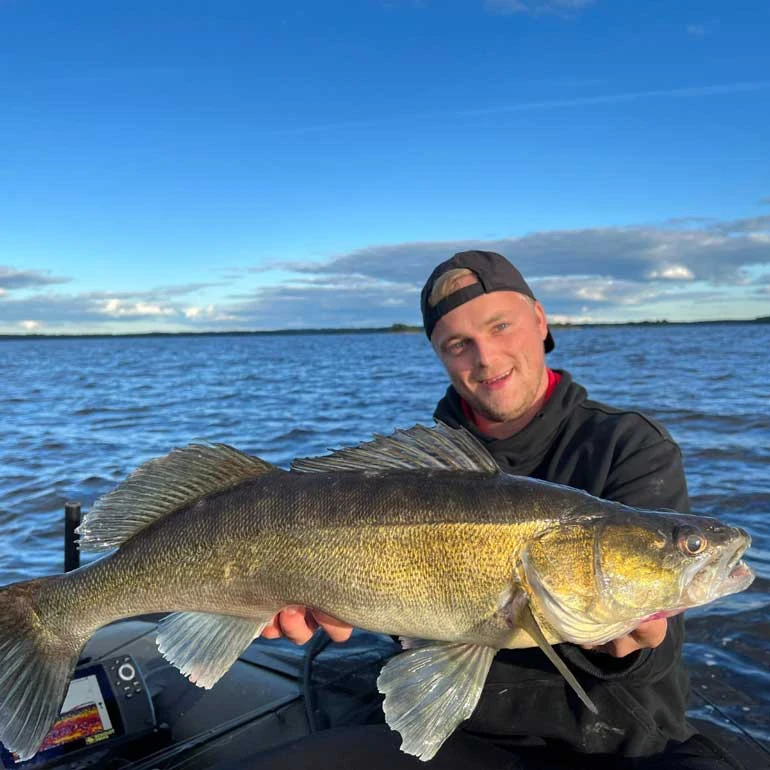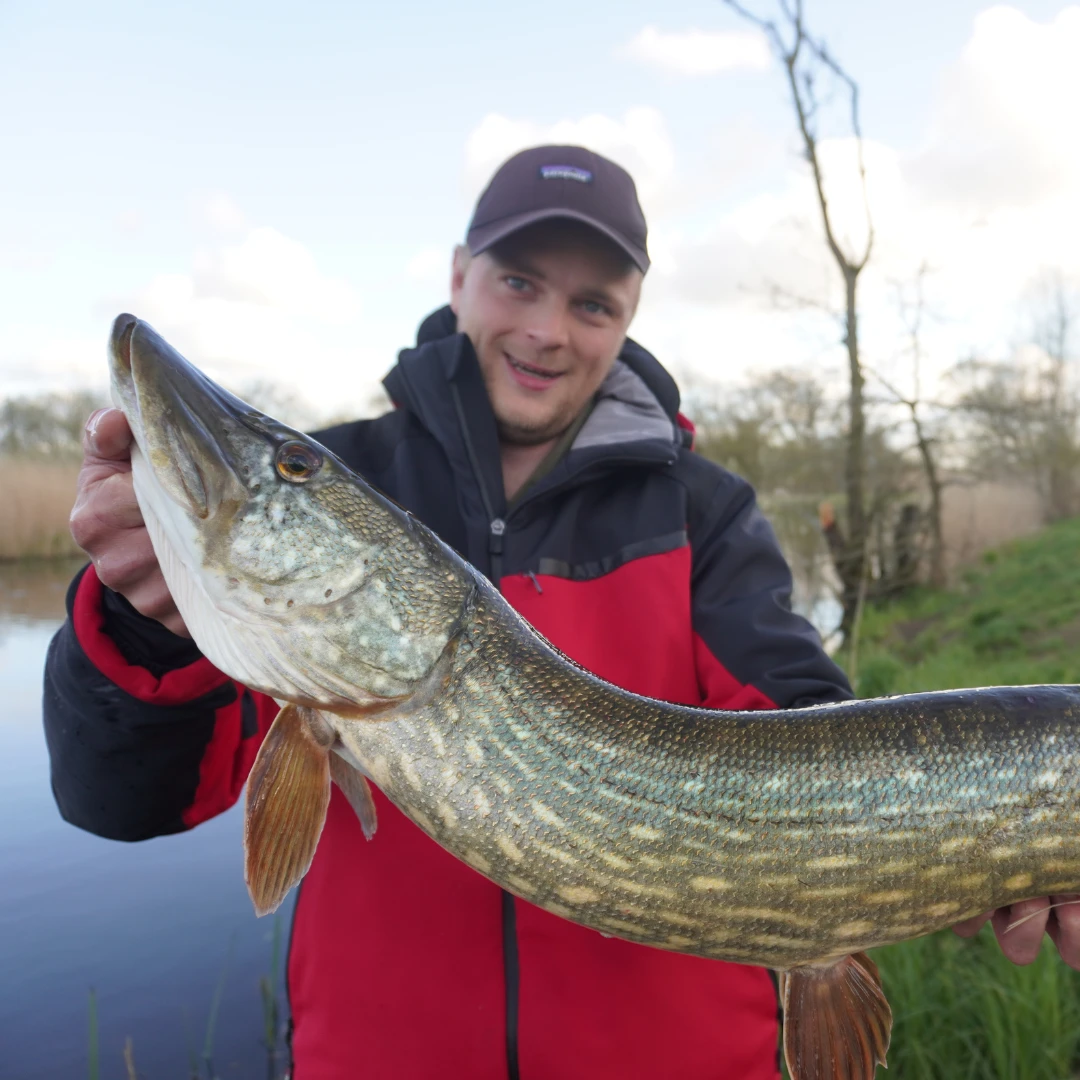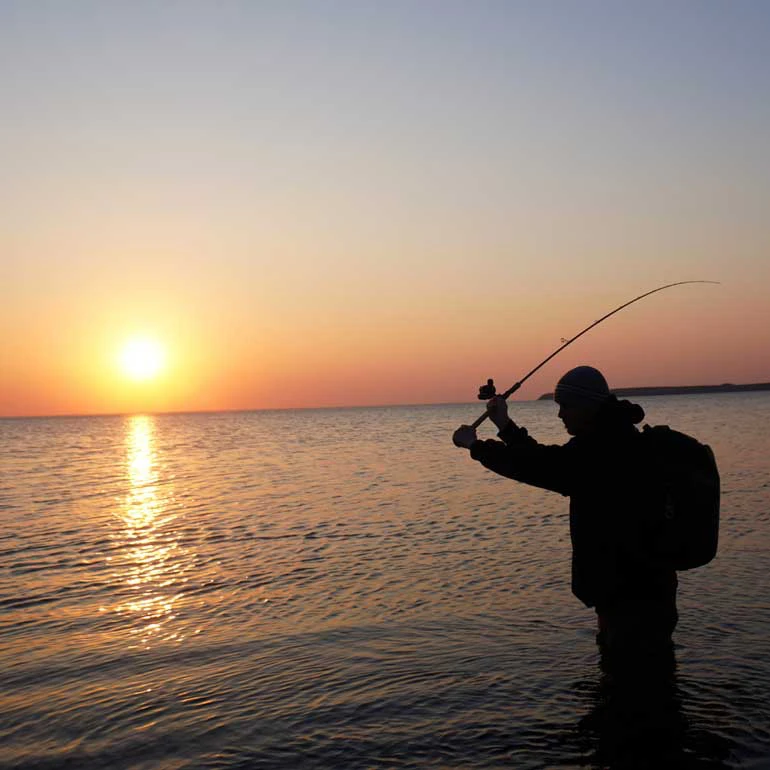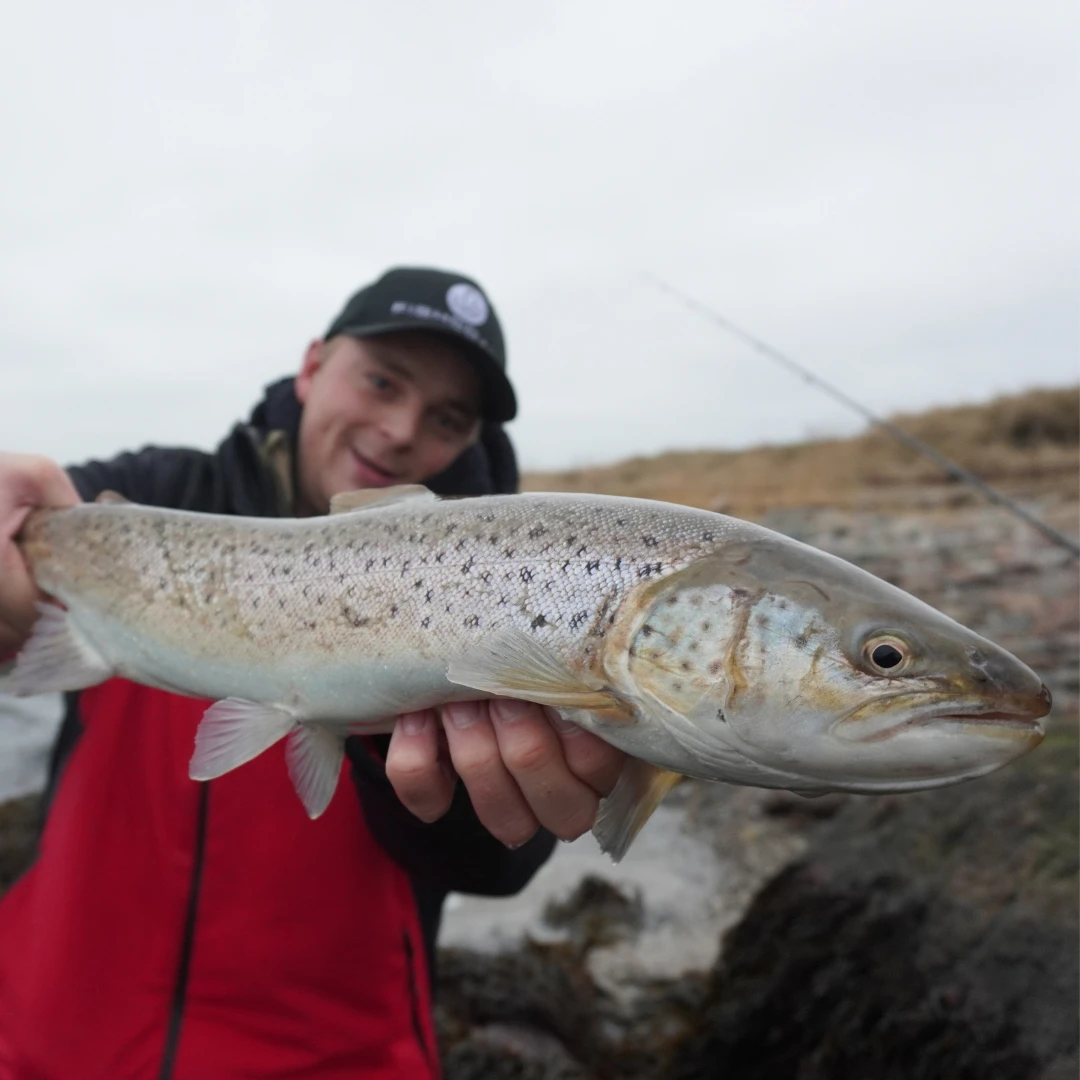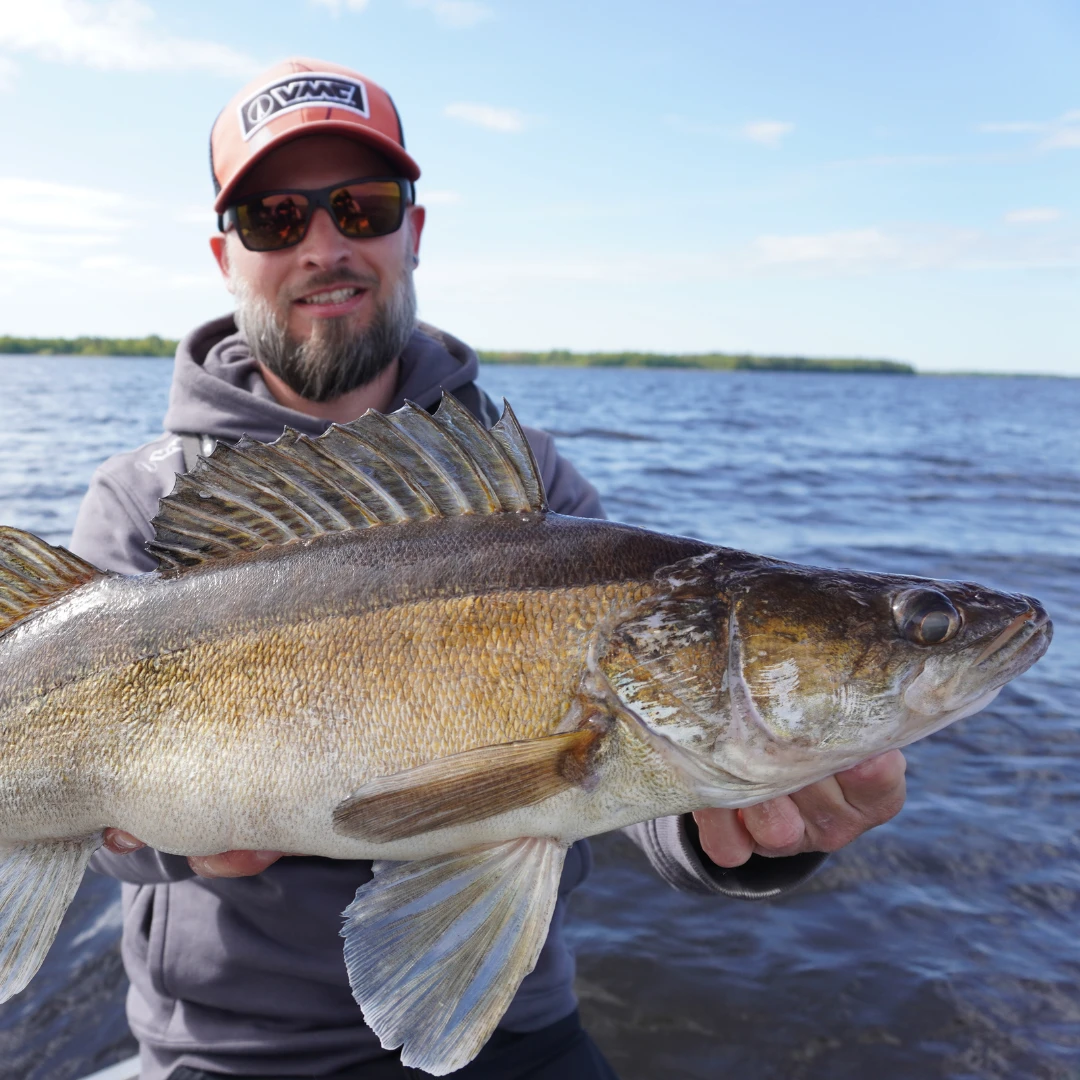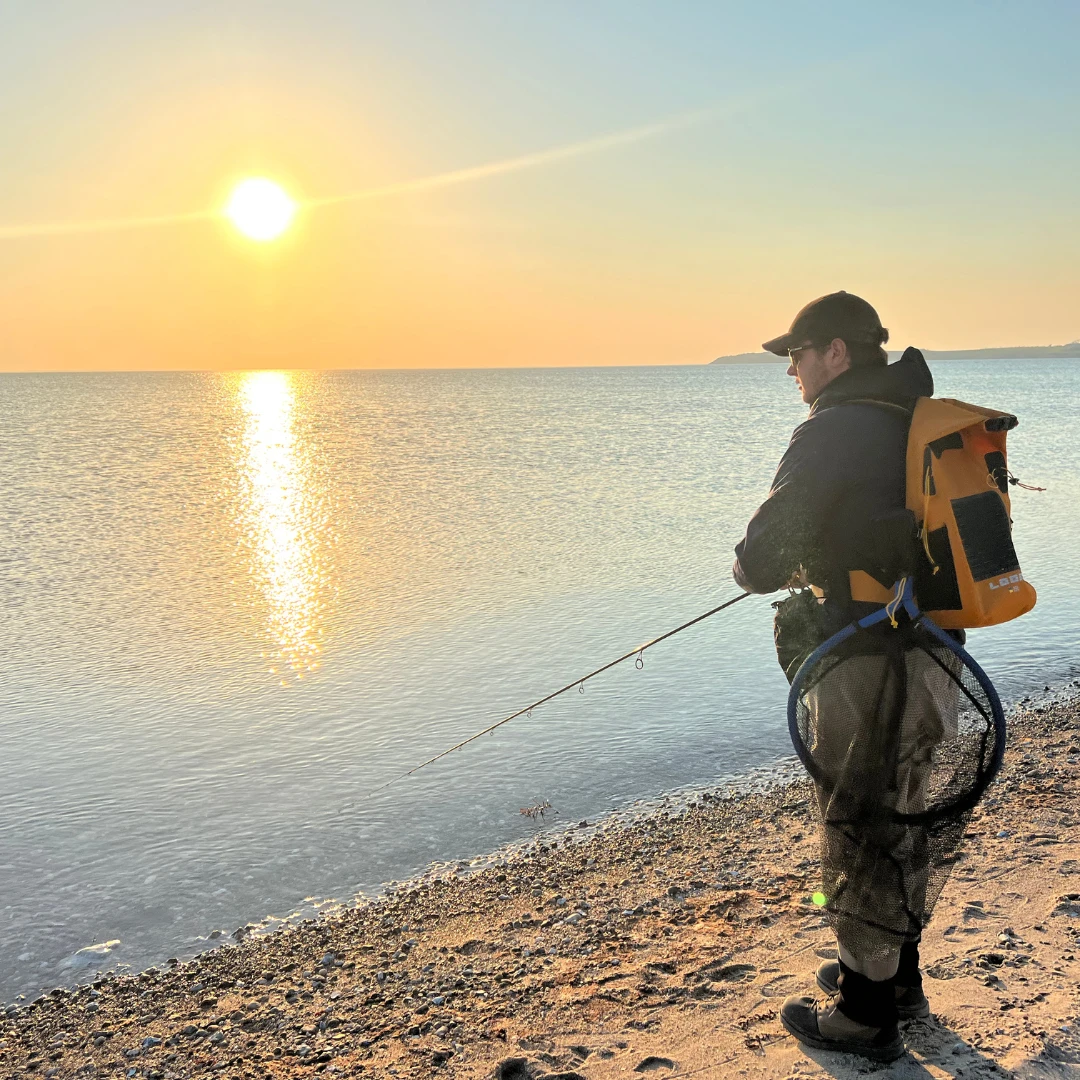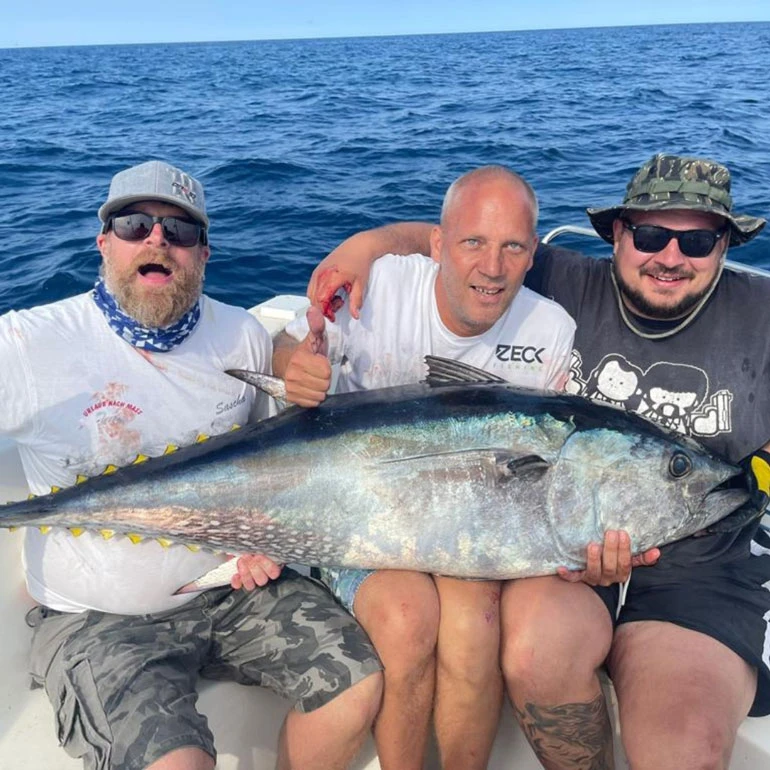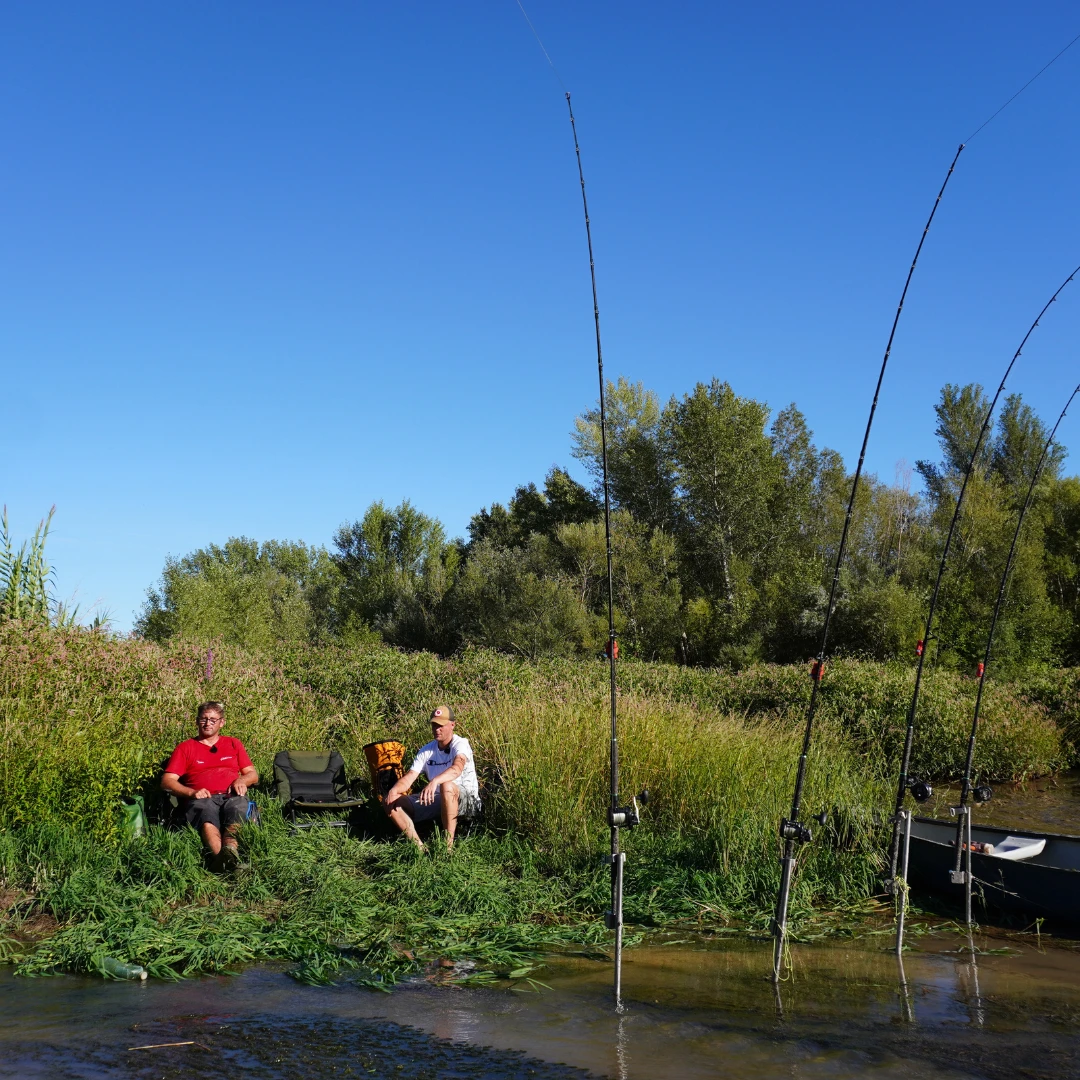
19
Oct
Winter Perch Fishing - From the Shore with Finesse Rigs
Content: 1. Three Key Success Factors for Winter Perch Fishing: Spot, Patience, and Bait Presentation 2. Finding the Best Spots for Big Perch in Winter 3. Patience and Endurance Are Crucial for Winter Perch Fishing 4. Finding the Best Spots for Big Perch in Winter 5. Carolina Rig 6. Traditional Jigs 7. Twitch Baits
As you read this article, you're probably wondering how you can catch the big perch, maybe even that 50cm+ perch you've only seen in popular YouTube videos. If you read this article attentively to the end, you'll be one step closer to realizing your dream.
Three Key Success Factors for Winter Perch Fishing: Spot, Patience, and Bait Presentation
There are three crucial factors that are more important than your lure, lure color, or the right weather conditions. In the following sections, we'll explain why your spot selection for big perch might have been wrong until now and what you should focus on in the future. We'll also discuss why success in catching big perch requires a lot of patience and, most importantly, how your bait presentation can make the difference between success and failure.
Finding the Best Spots for Big Perch in Winter
Perch, especially large ones, prefer shallow shoreline areas in winter. Contrary to common belief that you should always fish deep in the winter, the motto here is "shallow, shallower, as shallow as possible." This advice might leave you puzzled, as you've been told to fish in deeper, warmer waters in winter. While this is generally a good rule to follow, it may not be the best approach when targeting big perch. These larger fish often stay in shallow waters, sometimes in knee-deep water, up to the first drop-off at 2-3 meters deep. Other excellent winter hotspots include docks and harbors. These areas often have the preferred structures that attract perch.
What kind of shoreline structure should you look for to have a good chance of success? Look for areas with rocky, mussel-covered, wooden, or hard bottoms. Perch feel most comfortable in these places, likely because these areas often host crayfish populations, which serve as an easy snack in the winter. Use this as a mnemonic for winter fishing: "Where there are crayfish, perch are not far away." It's no wonder successful perch anglers often rely on crayfish imitations; they are a potent weapon for winter perch. You'll learn how to present these crayfish later in detail.
Patience and Endurance Are Crucial for Winter Perch Fishing
For anyone who has ever fished for large perch, this is nothing new. You spend hours and hours fishing without a single bite. At the end of the day, you often go home frustrated, with the consolation of having enjoyed the outdoors. We can assure you that you're not alone in this. Even the videos and professional anglers have days when it seems like there's not a single fish in the water for over 8 hours or more.
But what sets these anglers apart from you? They have the endurance to fish for hours without any perch action. However, when a bite finally comes, it's usually the trophy perch you dream of. Especially in winter, perch often exhibit a very cautious biting behavior on many days. It could be a slight nibble on the bait or a bite that's barely discernible with the fishing rod. You can only recognize these light bites if you fish with intense concentration and long-lasting patience. Not every day is like this, and sometimes perch bite aggressively even in winter, but patience can definitely make the difference between catching fish and coming up empty-handed on many days.
We can't teach you patience in this article, but we can certainly motivate you to develop it. What you can do to maximize your chances on the water is to optimize your bait presentation. Now, we'll explain the three most common and tried-and-tested fishing techniques for winter perch.
Fishing Techniques and Bait Presentation for Winter Perch
In the realm of winter perch fishing, mastering the right fishing techniques and bait presentation is the key to unlocking the secrets of elusive trophy perch. This section delves into three highly effective methods: jigging, the Carolina Rig, and the strategic use of twitch baits. These techniques are essential tools in your angler's toolbox, allowing you to entice and outsmart the wily perch during the cold months. Let's explore these winter-specific approaches that can make all the difference between an empty bucket and a memorable perch catch.
Carolina Rig
The Carolina Rig is probably the most well-known winter rig available today. It combines many positive attributes, especially for winter perch fishing.
Fishing directly in perch hotspots - without getting snagged
The Carolina Rig uses offset hooks, which have the advantage of being hidden within the soft plastic bait. This means that the hook tip doesn't protrude from the lure, allowing your bait to navigate obstacles like trees, rocks, and vegetation more effectively. These are precisely the places where perch often wait for their prey. When a perch bites your bait, the hook point emerges from the soft plastic and usually hooks the fish reliably. Here, the rule is clear: Fewer snags mean more effective time for the fish to see and take the bait.
Bait presentation in slow motion: What the big perch love
The water in winter is cold, just like it is for you on the shore or in the boat. Do you feel like making sharp, fast movements in winter? Probably not. The good news is that perch don't either! The Carolina Rig allows you to make your bait move in slow motion along the lake or riverbed. Since the weight is positioned about a meter in front of your artificial bait, your lure sinks slowly after the initial cast, mimicking a slow-motion descent. This is how you should present your Carolina Rig. Depending on the water temperature, you can vary the pace. During very cold periods, below 4 degrees Celsius, a slower bait presentation is usually more effective. Some professionals even take it to the extreme by "dragging" their rigs, allowing the bait to sit on the bottom for several seconds, with just a quarter or half a reel turn every 3-5 seconds, before letting the bait rest again. As mentioned earlier, crayfish imitations work exceptionally well for this method. So, in conclusion, fish slower than you might think is sensible, especially on cold days.
Full bait control - even on windy days
Do you sometimes struggle to establish proper bait contact on cold, windy days? Cold fingers, and the wind tugging at your line, create challenging conditions. This is where the C-Rig comes to the rescue because you can fish it with a heavier weight without affecting the bait's sinking phase. As mentioned before, the weight and bait are separate. So, if you opt for a 28g Carolina Bullet Weight, your bait will sink at the same slow rate as with a 15g weight. However, if you use a 28g jig head in winter, your bait will likely move too quickly for the sluggish perch.
Traditional Jigs
If you prefer traditional methods and simple setups, you can also rely on the classic practice of jigging with small rubber lures. When jigging in winter, the motto "as light as possible, as heavy as necessary" applies more than ever. In simple terms, the lighter your jig head, the slower you can present your bait. This applies to both the Carolina Rig and jigging – fish your bait slowly and with smaller, less jerky movements. Where wind, weather, and current permit, consider ultra-light fishing in winter with weights as low as 1-5 grams, allowing for optimal slow sinking phases. Additionally, use buoyant baits like crayfish imitations with "floating" claws, which enable an even slower bait presentation, as you can leave them lying on the bottom for several seconds while their buoyant parts "sway" enticingly along the lakebed. A bonus tip: Many professionals swear by flavored baits, such as those infused with fish oil, squid oil, or similar scents, especially for a slow presentation on the lakebed.
Twitch Baits
A Twitch Bait in the list of top lures for winter perch? Doesn't that belong in a selection of lures for summer perch fishing? Yes and no. Many anglers are familiar with and love small twitch baits, which they swiftly twitch through the water in summer, capturing fish effectively. In winter, they are more than just an alternative, especially for big perch, if used correctly.
Which Twitch Baits are recommended in winter when fishing for perch?
First, don't be afraid to use baits over 8cm in length, even up to 12cm. Large perch aren't shy about larger baits, and they're not particularly interested in expending a lot of energy on feeding in winter, just like most fish. Also, larger baits tend to weed out smaller perch. Even 30cm perch aren't known for being overly concerned about bait size. Larger baits also add a few extra grams, which allows you to cover more water. Adjust the running depth to the depth of the water, and generally, choose shallow divers with a diving depth of 1-2m. There are many advantages to this approach. Moreover, virtually all twitch baits are "suspending," which means they remain virtually weightless in the water column when not actively animated with your rod, which relates to slow fishing.
How do I properly use my Twitch Bait in winter?
After casting, the twitch bait hovers weightlessly on the surface. You should crank it down to the desired depth with 5-8 reel turns. Then, you can start twitching. Compared to summer, your twitches, which induce lateral movement of the lure, should be gentler and less aggressive. After twitching your bait once or twice, let it sit for 1-2 seconds. Often, the strikes occur during these pauses. Vary the length of the pauses, and the colder it is, the longer you can extend them, even up to 3-4 seconds.
In summary, a slow bait presentation, selecting the right spots, and, most importantly, having the necessary patience will lead to success sooner or later. Good luck on the water, and please let us know on our social media channels how you liked the article or if you were able to successfully apply these tips.
